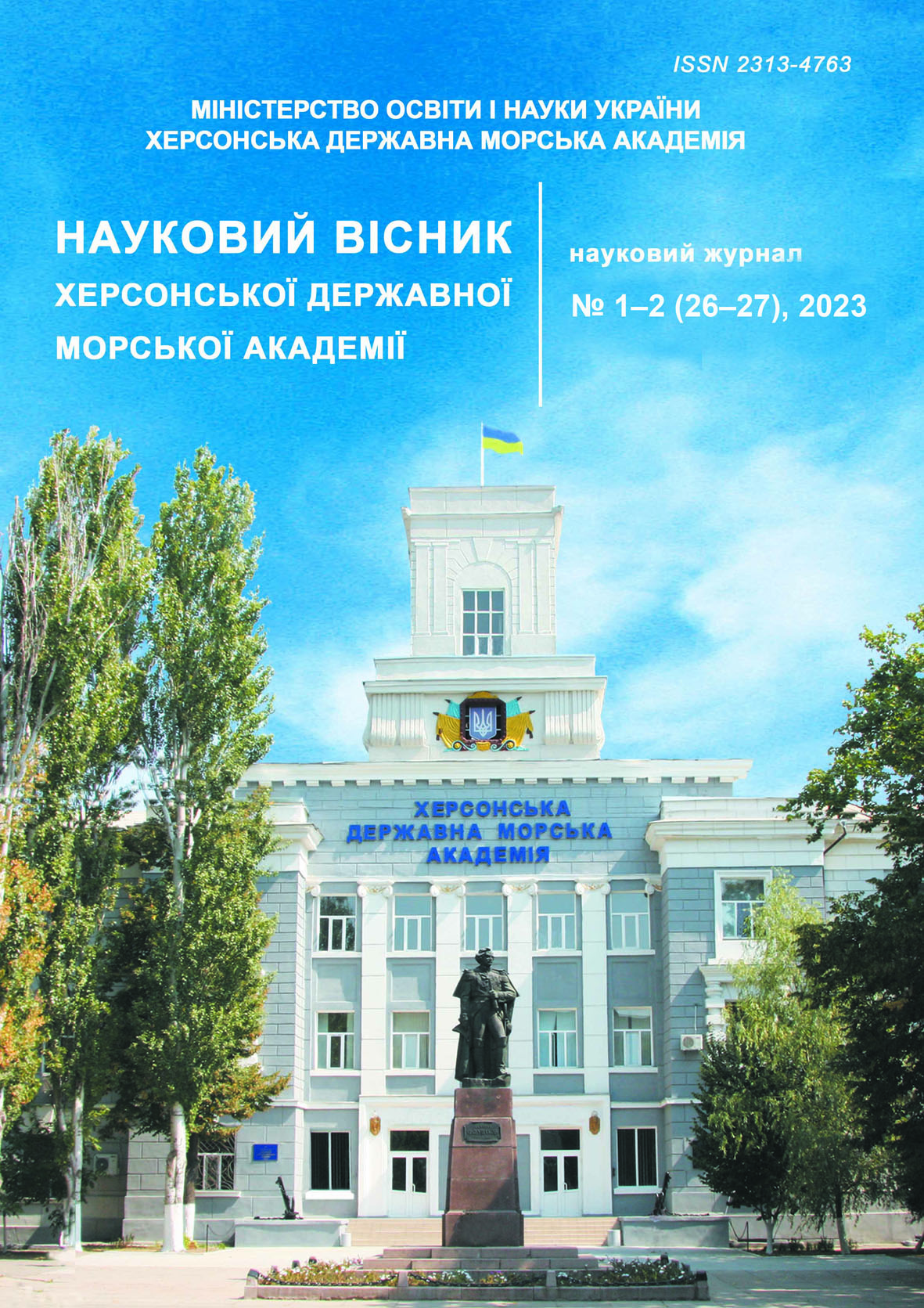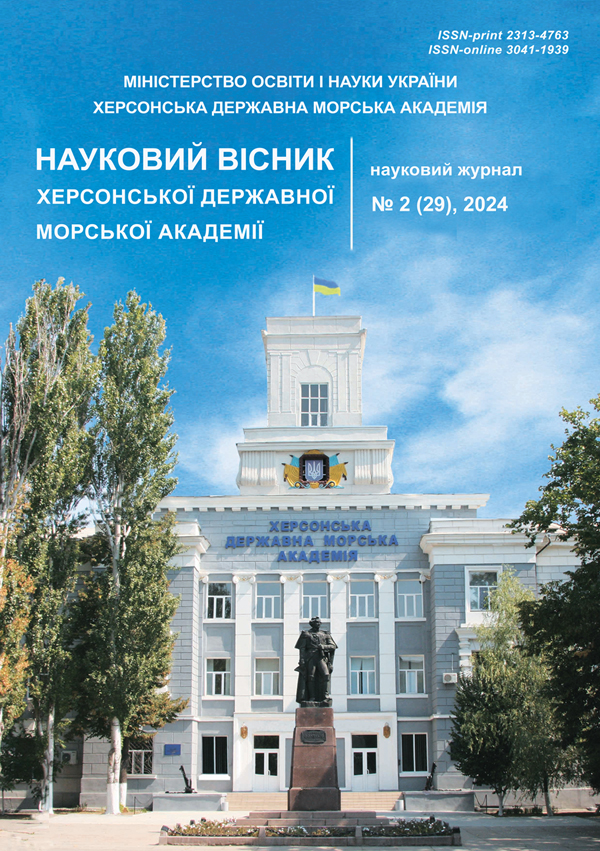DEVELOPMENT OF LOAD TRANSFER BY THE PARTS OF A RAM-TYPE STEERING GEAR MODEL
https://doi.org/10.33815/2313-4763.2024.2.29.139-150
Abstract
The article deals with the load capacity of ram-type steering machines. A new mathematical model of load between gear parts is developed. The presented discrete mathematical model takes into account the size and the ratio of the gaps 2Z between the ram and the sleeve, as well as the gap Zgb between the ram and the guide beam slipper. Depending on the ratio of forces: lateral, sufficient to select the angular gap between the ram and the sleeve, and sufficient to select the linear gap between the ram slider and the guide beam, the perception of the lateral load by the ram and the guide beam can occur in six possible variants. The ratios between the mentioned forces are recorded, determining the number and boundaries of lateral load transitions between the described variants of load perception. The calculations were performed using the developed mathematical model on the example of the R-18 steering gear. It is shown that in the presence of the largest maximum permissible by the operating rules gaps between the ram and the sleeve, ram and the guide beam slipper, the guide beam can perceive 50…59% of the lateral load only at the rudder angle spectrum α = 21…35⁰, and in the range of the most common in operation rudder angle amplitude
α = 0…10⁰ in the operation of main vessels, the guide beam does not perform its function at all, overloading the rams, bushings and seals. Performed in the article calculations confirm that the efficiency of the operation of the guide for unloading the ram from the transverse force depends on the state of the elements of the kinematic pairs of its mechanism, particularly the values of the gaps, which confirms the structural imperfection of the R-18 timing mechanism due to the presence of redundant constraints. It is shown that the reserve for increasing the technical level of ram-type steering machines lies in the application of new types of mechanisms for transferring the load from the rams to the tiller.
References
2. Protsenko, V., Malashchenko, V., Nastasenko, V., Babiy, M., Voitovych, O. (2024). Elevator drum-pad brake mechanisms: redundant constraints and reliability rise opportunity. Scientific Journal of Silesian University of Technology. Series Transport. 125, 229–242. ISSN: 0209-3324. https://doi.org/10.20858/sjsutst.2024.125.15.
3. Pogrebnyak, R. P., & Pohrebniak, M. R. (2020). Search and elimination of repeated connections in the scheme of guiding slide-crank mechanism of the gripping device. Science and Transport Progress, (3(87)), 129–137. https://doi.org/10.15802/stp2020/208261.
4. Paul, A. (2020). Analysis and implementation of redundant constraints in multibody systems. Ecole polytechnique de Louvain, Université catholique de Louvain, 2020. Prom. : Fisette, Paul. http:// hdl.handle.net/2078.1/thesis:25383.
5. Zalyubovskii, M. G., Panasyuk, I. V. (2020). On the Study of the Basic Design Parameters of a Seven-Link Spatial Mechanism of a Part Processing Machine. Int. Appl. Mech. 56: 54–64. https://doi.org/10.1007/s10778-020-00996-x.
6. Lu, P. (2013). Study on Redundant Constraint in Mechanism Design. In Advanced Materials Research (Vols. 734–737, pp. 2788–2791). Trans Tech Publications, Ltd. https://doi.org/10.4028/www.scientific.net/amr.734-737.2788.
7. Honcharenko, A. V. (2016). Ekspluatatsiia aktyvnykh transportnykh system v umovakh bahatoalternatyvnosti ta nevyznachenosti: dys. ... d-ra tekhn. nauk: spets. 05.22.20 – ekspluatatsiia ta remont zasobiv transportu. – K.: Natsionalnyi aviatsiinyi universytet.
8. Protsenko, V., Nastasenko, V., Babiy, M., Protasov, R. (2022). Marine ram-type steering gears maintainability increasing. Journal of Mechanical Engineering – Strojnícky časopis.; Vol. 72, №2: 149–160. https://doi.org/10.2478/scjme-2022-0025.
9. Protsenko, V. O. Pidvyshchennia strukturnoi doskonalosti tanhensnoho mekhanizmu sudnovykh rulovykh mashyn plunzhernoho typu / V. O. Protsenko, D. O. Marynchenko // Pidiomno-transportna tekhnika. Naukovo-tekhnichnyi ta vyrobnychyi zhurnal. – Odesa: INTERPRINT. – 2022. – №1 – S. 88–96. https://doi.org/10.15276/pidtt.1.67.2022.08.
10. Protsenko, V. O., Nastasenko, V. O., Babiy, M. V., & Bilokon, A. O. (2020). Marine ram-type steering gear details load transfer features. Shipping & Navigation, 30(1), 107–116. https://doi.org/10.31653/2306-5761.30.2020.107-116.
11. Protsenko, V. O., Nastasenko, V. O., Babii, M. V., & Bilokon, A. O. (2021). Perspektyvy vdoskonalennia vazhilnoho mekhanizmu rulovykh mashyn plunzhernoho typu. Transport development, (1(8)), 78–90. https://doi.org/10.33082/td.2021.1-8.08.
12. Posatskyi, S. L. (1963). Opir materialiv. Vydavnytstvo Lvivskoho universytetu.
13. Fesyk, S. P. (1982). Spravochnyk po soprotyvlenyiu materyalov. Budivelnyk.
14. Kharin V. M. ta in. (2010). Sudnovi mashyny, ustanovky, prystroi ta systemy. Translit, 646 s.
15. Malashchenko, V. O. (2014). Torcevi ushchilnennya pidvishchenoi hermetychnosty. NUVGP.






